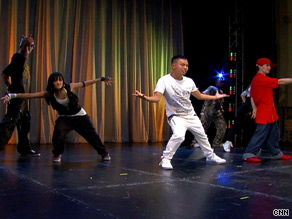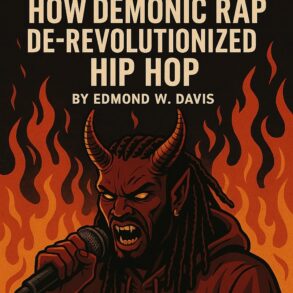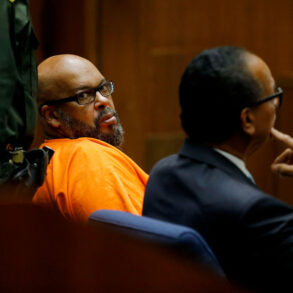WASHINGTON (CNN) — Six hip-hop artists from five countries speaking four languages are on stage, warming up for their show at the Kennedy Center for the Performing Arts.

International hip-hop artists warm up for their show at the Kennedy Center for the Performing Arts on Tuesday.
“Warming up” doesn’t really capture it; the dancers explode across the stage, each one with a different hip-hop style.
Michelle Salazar is chic-grungy in black jeans and white T-shirt, her long black hair swirling around her head. Hassan El Haf, from Lebanon, tall and thin, does a kind of electric hip-hop mixed with salsa.
Argentines Mauricio Trech and Silvia Fernandez move in a dramatic break dance. Both hail from Argentina, home of the tango. Hien Ngoc Pham from Vietnam, with a buzz cut and dressed in white jeans and a white T-shirt, has Broadway bravado in his every move.
The dancing stops and Samer Samahneh begins rapping — in Arabic. No translation needed; it comes from his soul.
Three weeks ago, the dancers had never met, but now they’re a team, participating in the State Department‘s Cultural Visitors Program. The program consists of three weeks of meeting American hip-hop artists and dancers and visiting New York City, Philadelphia and Washington, D.C.
“It’s like a dream come true for me,” Salazar said Tuesday, the day of the team’s show, “because I only read their names in the Internet and now, like, I met Afrika Bambaataa, the founder of hip-hop. I was right next to him. It’s a real immersion into the culture. I don’t want to wake up!”
Salazar isn’t just star-struck. She’s learning a lot and she plans to bring it back to her fellow dancers in the Philippines.
“Dancers in the Philippines don’t have much of a foundation [in hip-hop],” she says. “They don’t understand why dancers do this” — she moves her arm — “or why they do this” — she strikes a pose. “Because if they knew why they would feel it. I can feel it by watching these [American] hip-hop dancers.”
Samahneh agrees: “You’ve got to feel it.” His rapping, he says, comes from inside-out. “Even if you don’t know the language, you can get involved with what I’m saying.”
Samahneh says that when he raps in his hometown of Nablus in the West Bank, he is “asking God to bring peace to our land.”
Colombia Barrosse, the vibrant head of the State Department’s Cultural Programs Division of the Bureau of Cultural Affairs, says the cultural cross-fertilization is the goal of the program.
“There is nothing that can substitute for being in the United States and meeting Americans in their place, to look at the richness and diversity of the United States. That’s irreplaceable,” she says.
The Cultural Visitors Program is part of the State Department’s cultural programming around the world. The $8.5 million budget is supplemented by institutions like the Kennedy Center, which is co-sponsoring this performance.
Most of the visiting artists in the program found their way to professional dance through hip-hop.
Pham, a member of the Vietnam Dance Association, is currently working to open a hip-hop training center in Ho Chi Minh City to reach out to young people.
With a broad smile, he says, “Hip-hop is such energy. It’s so young. It’s also an opportunity for our countries to get closer, and I have a lot of friends all over the world.”

Hip-hop may have started in the United States, but it belongs to everyone. Here’s how Hassan El Haf puts it: When he got to New York, he felt as if he had landed on his “real planet.”
“Yeah, I see them, all the dancers in the street, the music, all the people that like hip-hop music,” he says. “When I do hip-hop, it makes me feel happy all the time. This is my life.”
All About U.S. Department of State • Hip-Hop and Rap • Hip-Hop Culture
This post was originally published on this site be sure to check out more of their content.






